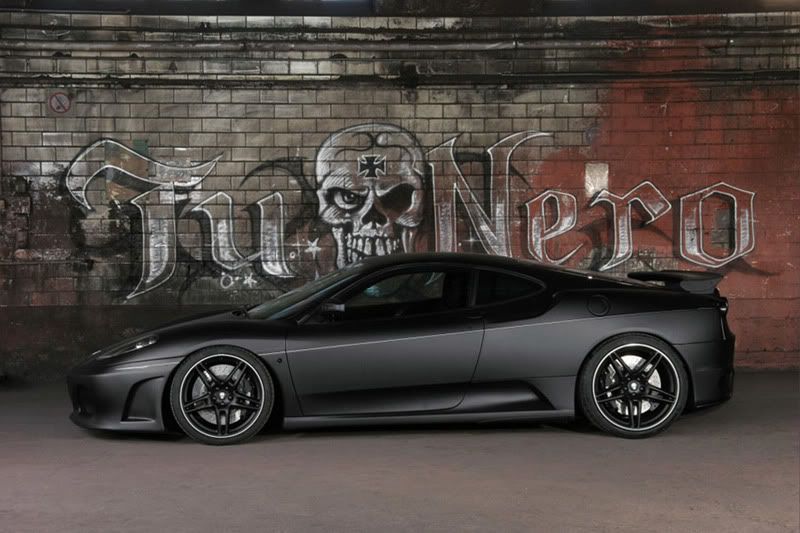
of Ferrai cars and bikes






| Manufacturer | Ascari Cars |
|---|---|
| Production | 1998–1999 |
| Successor | Ascari KZ1 |
| Class | Sports car |
| Body style(s) | 2-door coupe |
| Platform | Rear mid-engine, rear-wheel drive |
| Engine(s) | 4.7 L V8 |
| Transmission(s) | 5-speed manual |
| Wheelbase | 2,850 mm (112.2 in) |
| Length | 4,280 mm (168.5 in) |
| Width | 1,828 mm (72.0 in) |
| Height | 1,120 mm (44.1 in) |
| Curb weight | 1,250 kg (2,756 lb) |
| Designer | Lee Noble |
| Manufacturer | Ascari Cars |
|---|---|
| Production | 2006–present |
| Assembly | Banbury, England |
| Class | Sports car |
| Body style(s) | 2-door coupe |
| Layout | RMR layout |
| Engine(s) | 5.0 litre BMW V8 S62 |
| Transmission(s) | 6-speed manual (sequential manual in option) |
| Wheelbase | 2,636 mm (103.8 in) |
| Length | 4,300 mm (169.3 in) |
| Width | 1,852 mm (72.9 in) |
| Height | 1,138 mm (44.8 in) |
| Curb weight | 1,280 kg (2,822 lb) |
| Related | Ascari KZ1, Ascari KZ1-R, BMW M5 |
| Designer | Paul Brown |


| Manufacturer | Artega Motors |
|---|---|
| Production | 2009– |
| Class | Sports car |
| Body style(s) | 2-door Coupé |
| Layout | RMR layout |
| Engine(s) | 3.6 L V6, 300 hp (224 kW) |
| Transmission(s) | six-speed DSG |
| Wheelbase | 2,460 mm (96.9 in) |
| Length | 4,010 mm (157.9 in) |
| Width | 1,880 mm (74.0 in) |
| Height | 1,180 mm (46.5 in) |
| Curb weight | approx. 1,100 kg (2,425 lb) |
| Designer | Henrik Fisker |
| Manufacturer | Alfa Romeo SZ |
|---|---|
| Also called | ES-30 or Il Mostro |
| Production | 1989–1991 SZ 1992–1994 RZ |
| Assembly | Terrazzano di Rho (MI), Italy |
| Successor | Alfa Romeo 8C Competizione |
| Class | Sports car |
| Body style(s) | coupe (SZ) convertible (RZ) |
| Layout | FR layout |
| Engine(s) | 3.0 L V6 |
| Transmission(s) | 5-speed manual |
| Wheelbase | 2,510 mm (98.8 in) |
| Length | 4,059 mm (159.8 in) |
| Width | 1,730 mm (68.1 in) |
| Height | 1,311 mm (51.6 in) SZ 1,300 mm (51.2 in) RZ |
| Curb weight | 1,256 kg (2,769 lb) SZ 1,380 kg (3,042 lb) RZ |
| Related | Alfa Romeo 75 |
| Designer | Robert Opron/Antonio Castellana |
| Manufacturer | Alfa Romeo |
|---|---|
| Also called | Alfa Romeo TZ |
| Production | 1963–1967 |
| Predecessor | Alfa Romeo Giulietta SZ |
| Successor | Alfa Romeo GTA Alfa Romeo Tipo 33 |
| Body style(s) | 2-door coupe |
| Layout | FR layout |
| Engine(s) | 1.6 L I4 |
| Transmission(s) | 5-speed manual |
| Wheelbase | 2,200 mm (86.6 in) |
| Length | 3,950 mm (155.5 in) TZ 3,680 mm (144.9 in) TZ2 |
| Width | 1,509 mm (59.4 in) TZ 1,600 mm (63.0 in) TZ2 |
| Height | 1,199 mm (47.2 in) TZ 1,020 mm (40.2 in) TZ2 |
| Curb weight | 660 kg (1,500 lb) (TZ) 620 kg (1,400 lb) (TZ2) |
| Manufacturer | Ariel Ltd |
|---|---|
| Production | <100 per year |
| Engine(s) | 2.0 L 245-300 bhp Naturally Aspirated or Supercharged Honda K20A1 3.0L 500 bhp Ariel V8 |
| Transmission(s) | 6-speed manual |
| Length | 3.41 m (11 ft 2 1⁄2 in) |
| Width | 1.798 m (5 ft 11 in) |
| Height | 1.195 m (3 ft 11 in) |
| Curb weight | 1,350 lb (612 kg) |
| Designer | Nik Smart |
| Manufacturer | Alfa Romeo |
|---|---|
| Production | 1967–1971 |
| Assembly | Milan, Italy (Carrozzeria Marazzi) |
| Class | Sports car |
| Body style(s) | 2-door coupe |
| Layout | Rear mid-engine, rear-wheel drive |
| Engine(s) | 2.0 L V8 |
| Transmission(s) | Colotti 6-speed manual |
| Wheelbase | 2,350 mm (92.5 in) |
| Length | 3,970 mm (156.3 in) |
| Width | 1,710 mm (67.3 in) |
| Height | 991 mm (39.0 in) |
| Curb weight | 700 kg (1,543 lb) |
| Related | Racing car: Alfa Romeo Tipo 33 Concept cars: Alfa Romeo Carabo Alfa Romeo 33.2 Alfa Romeo Iguana Alfa Romeo Navajo |
| Designer | Franco Scaglione |